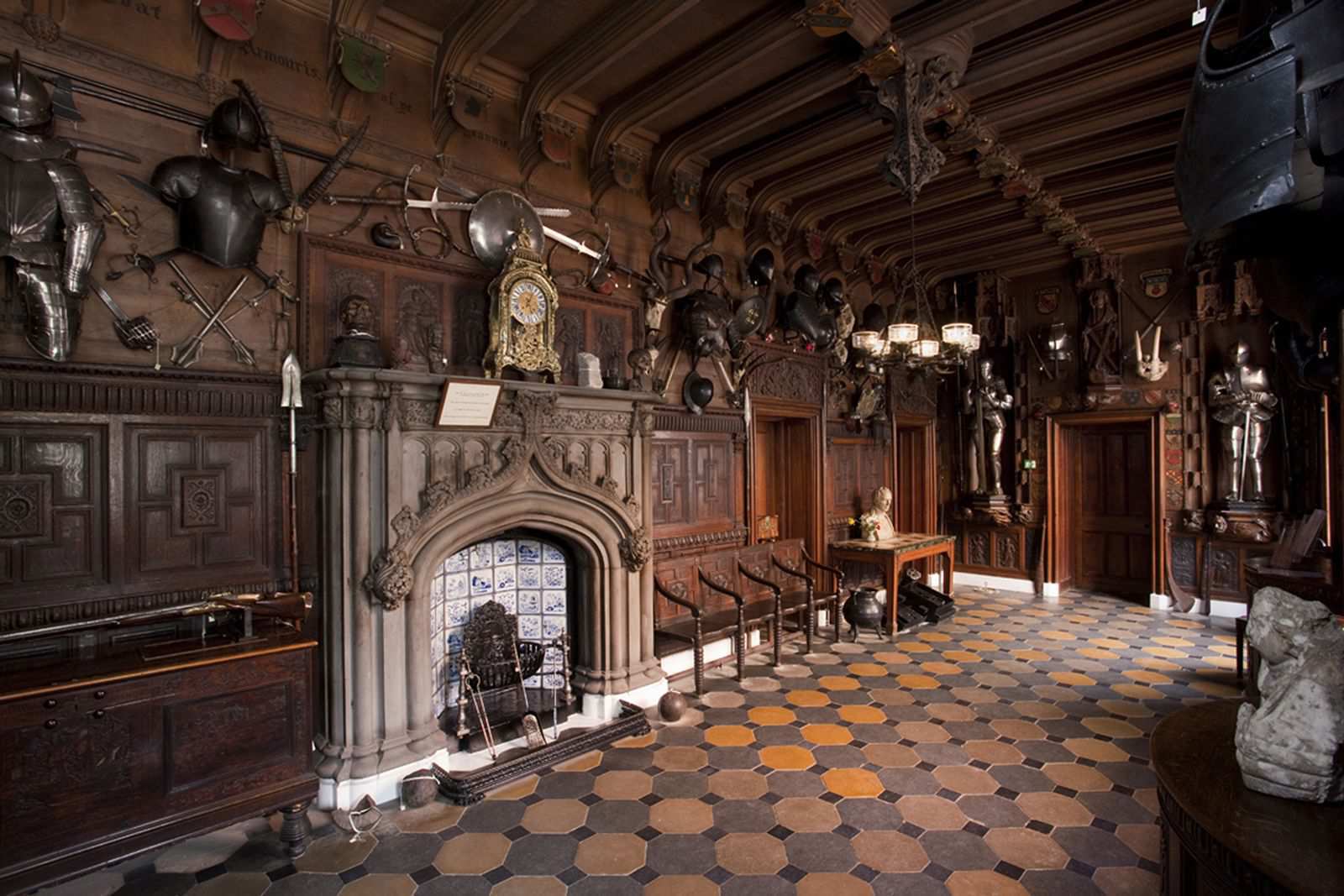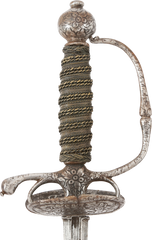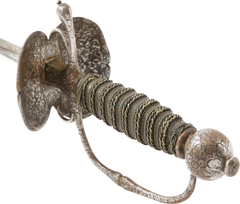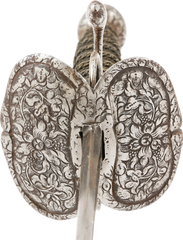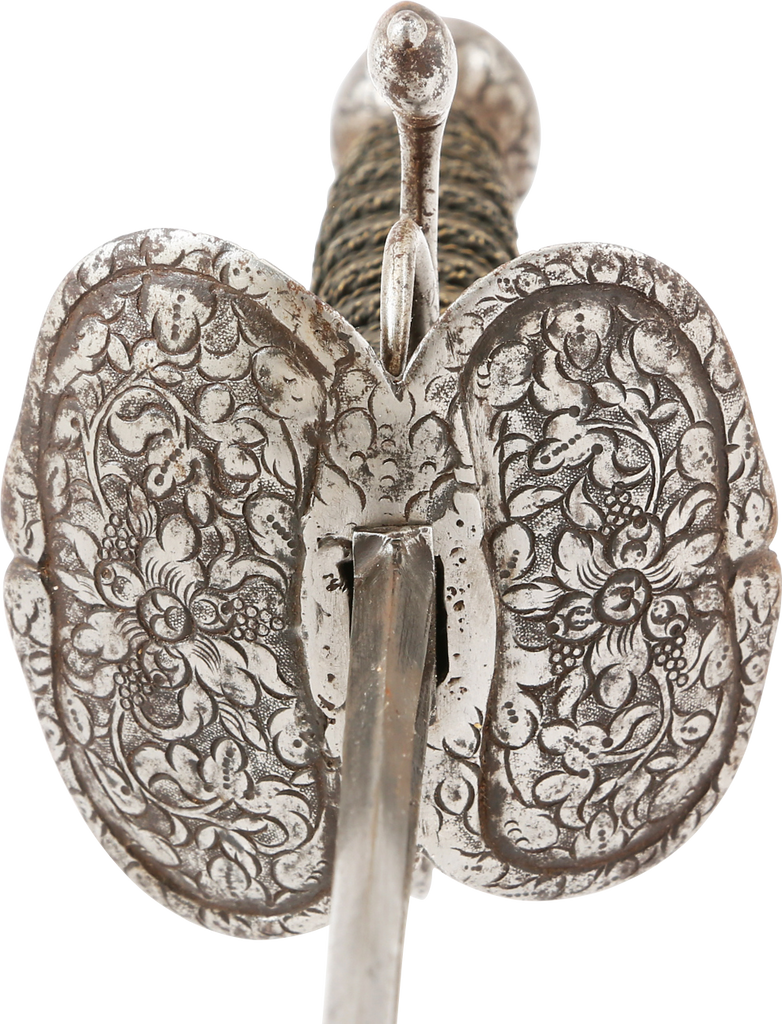Transitional rapier form. 31 ¼” flattened diamond section blade with deep line bordered fullers at the forte inscribed III III III A N T O N I O III III III/III III III P I C N I N I O III III III. Antonio Picinino of Milan is among the most esteemed swordmakers in Italian history. This blade has been remounted to bring the hilt form up to date to conform to evolved fighting techniques, as was common. The misspelling of the surname is the work of an illiterate workman who caught up in the rhythm, punched N I N I for I N I N. Such misspellings are common and major collections such as the Wallace Collection, have multiple examples with various spellings for the same makers. The iron hilt has thickened edge asymmetrical shell guards, skillfully chiseled in flowers and foliage, inside and out. The guard and pommel are chiseled en suite. The grip is finely wrapped in brass wire with a central cluster to enhance gripping. this sword dates specifically to the War of Spanish Succession, precipitated by the death of Charles II of Spain, absent a male heir. Spanish possessions were invaded by France, backing Philippe of Anjou’s claim to the throne. The War lasted 1701-14 on four continents and resulted in vast territorial concessions including Gibraltar to Britain. A notable event of the war was the Battle of Blenheim, in which George Churchill, Duke of Marlborough, delivered a crushing defeat to the Bavarian forces attempting to take Vienna, effectively eliminating them from the war and stopping Louis XIV’s plan to defeat the Holy Roman Empire. Churchill was given his title, Duke of Marlborough, and the estate and house at Blenheim Palace, which later was the birthplace of Winston Churchill.




